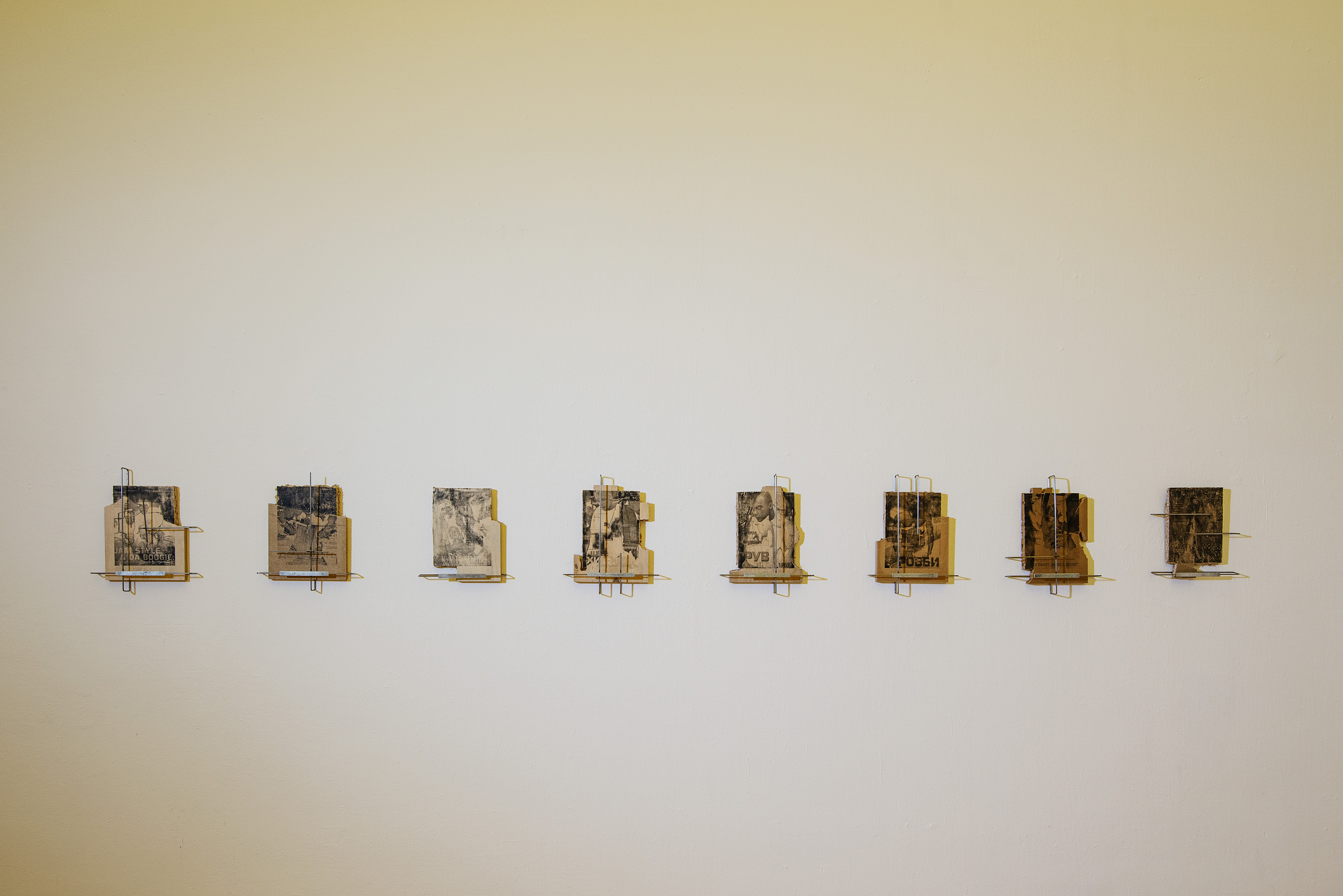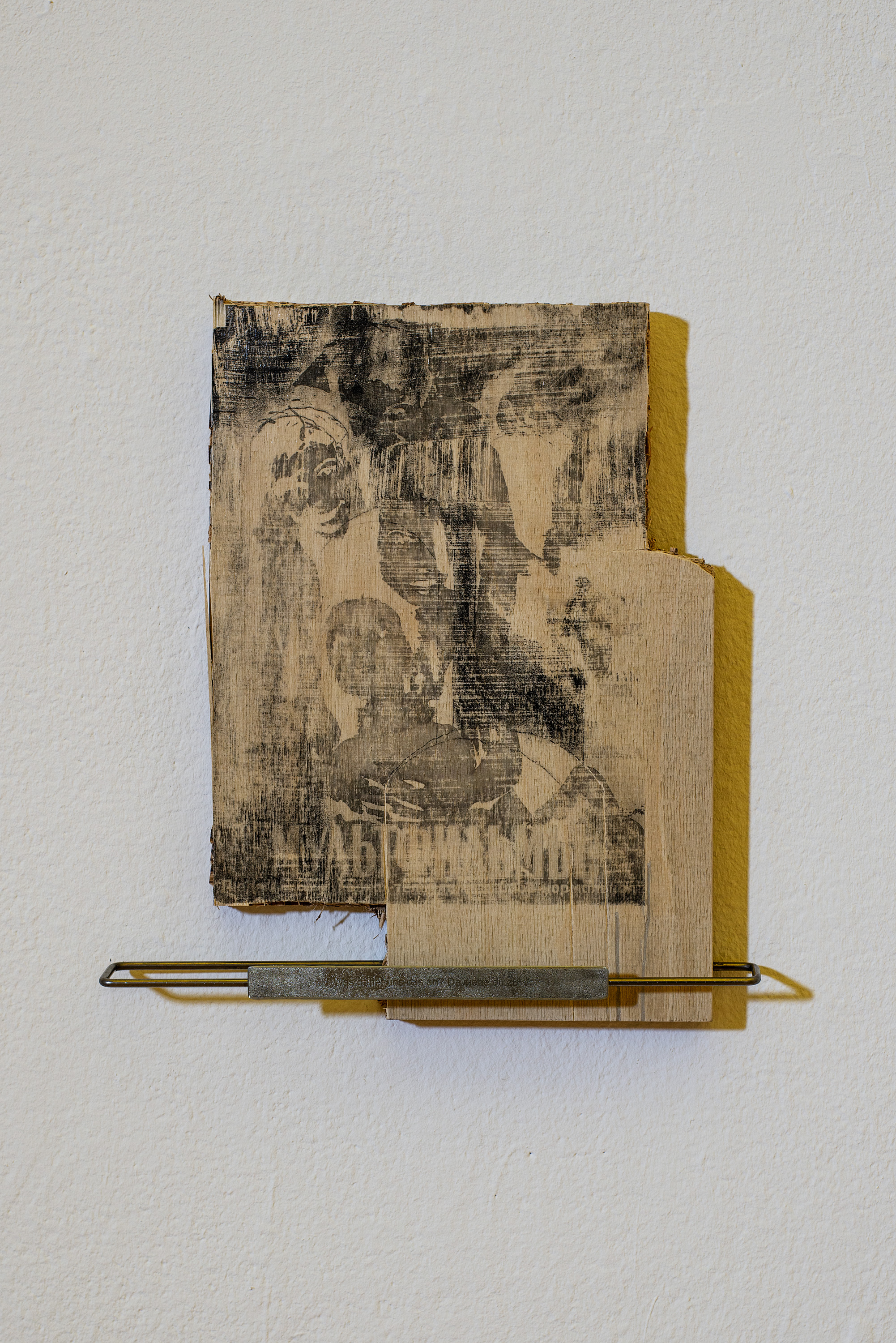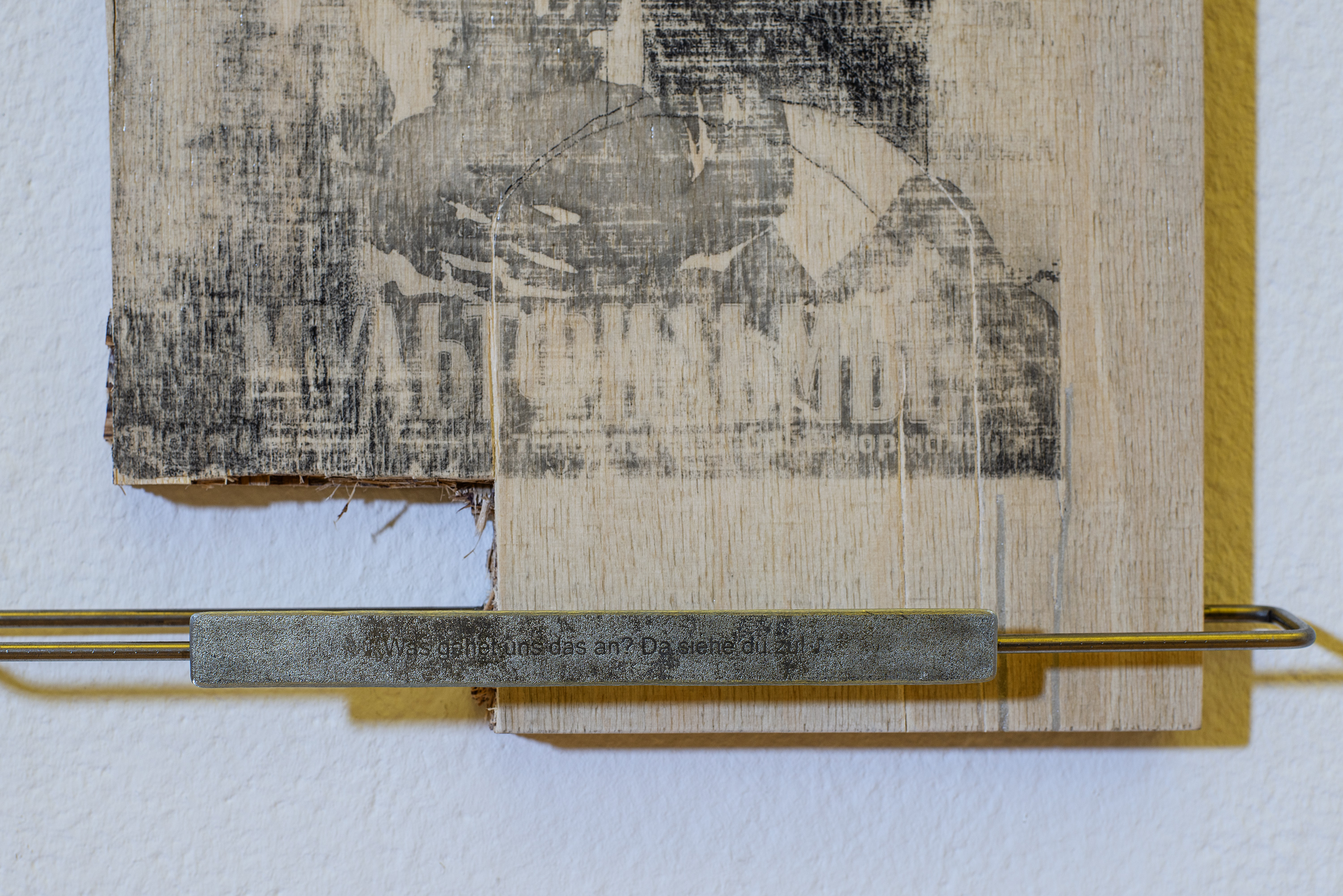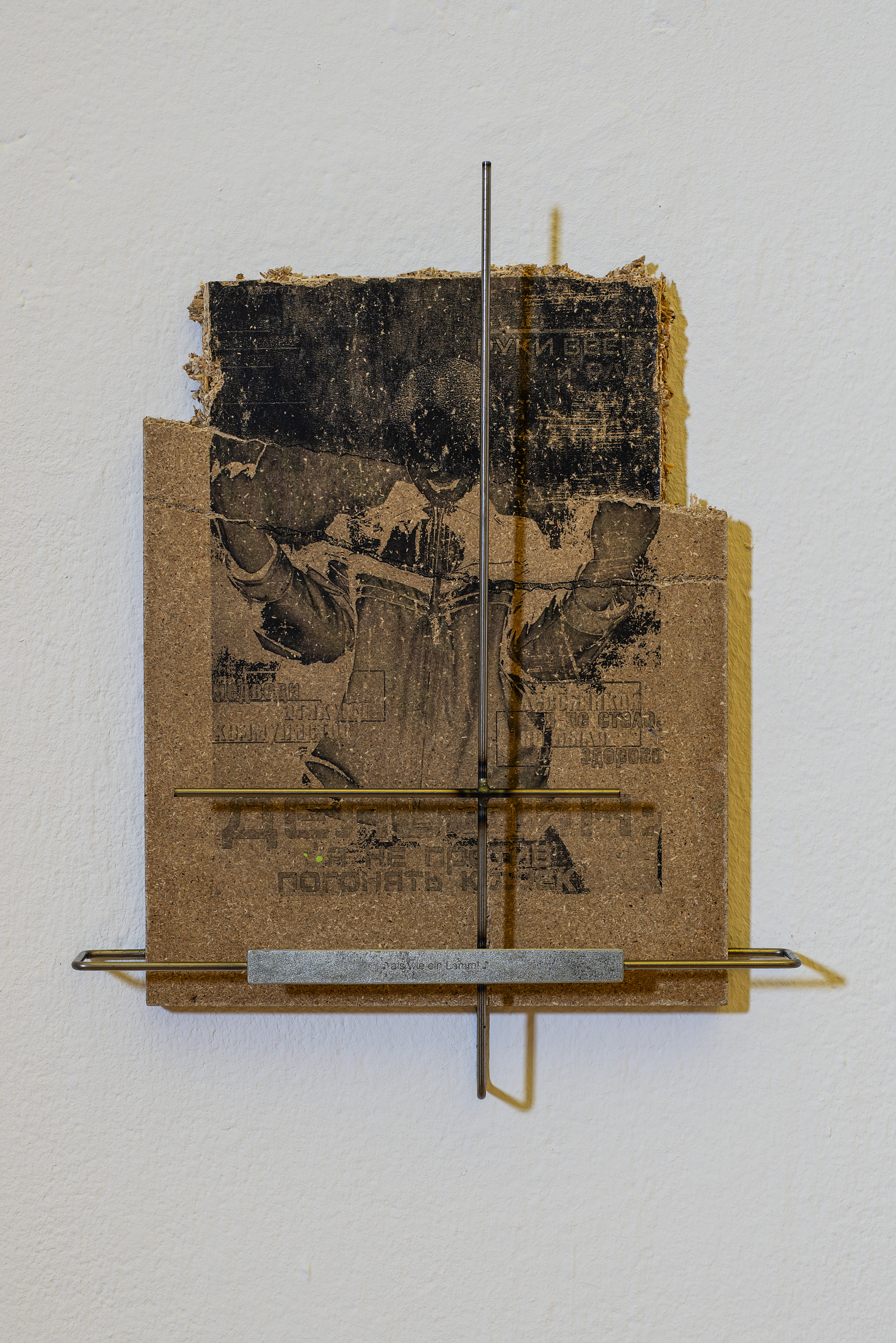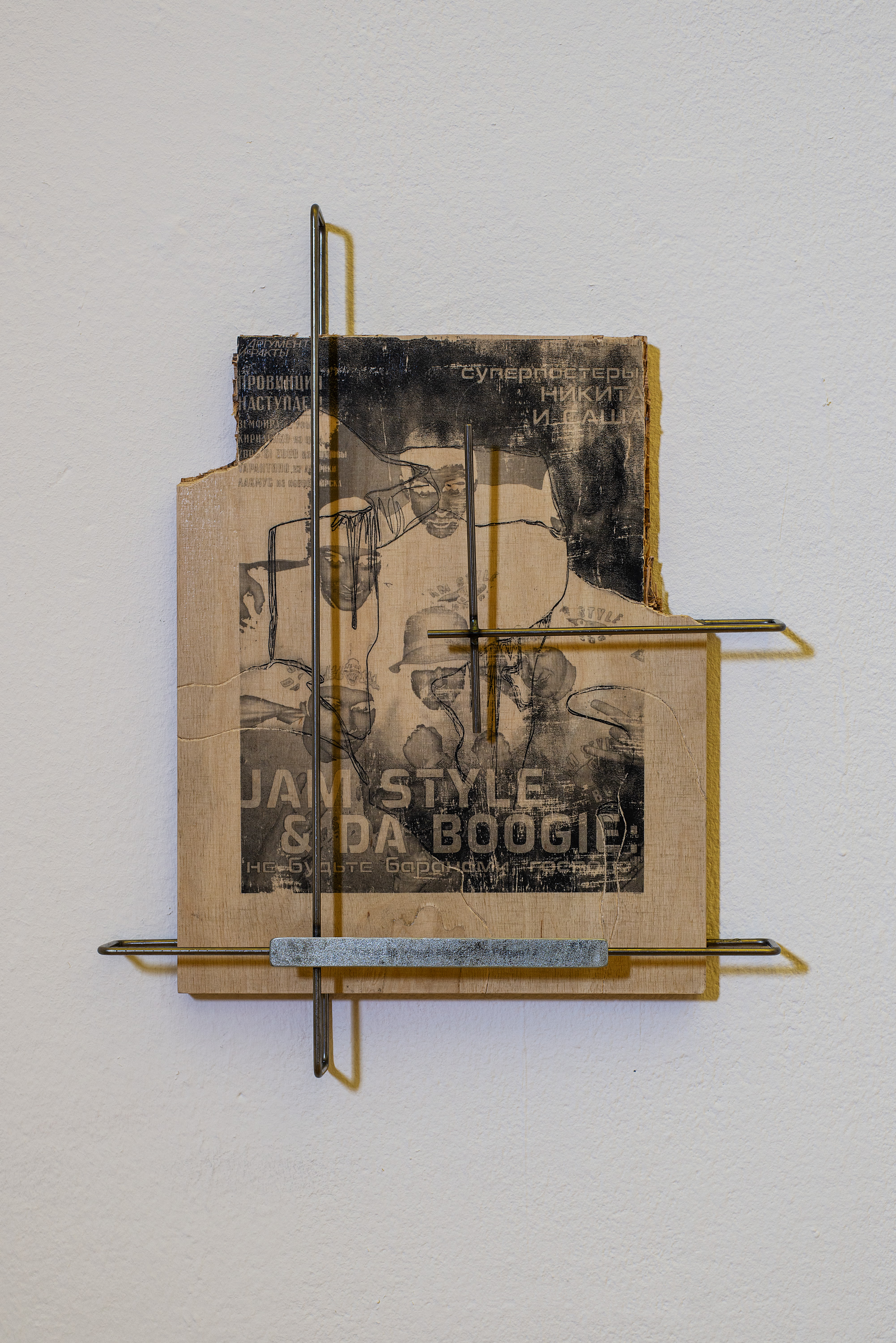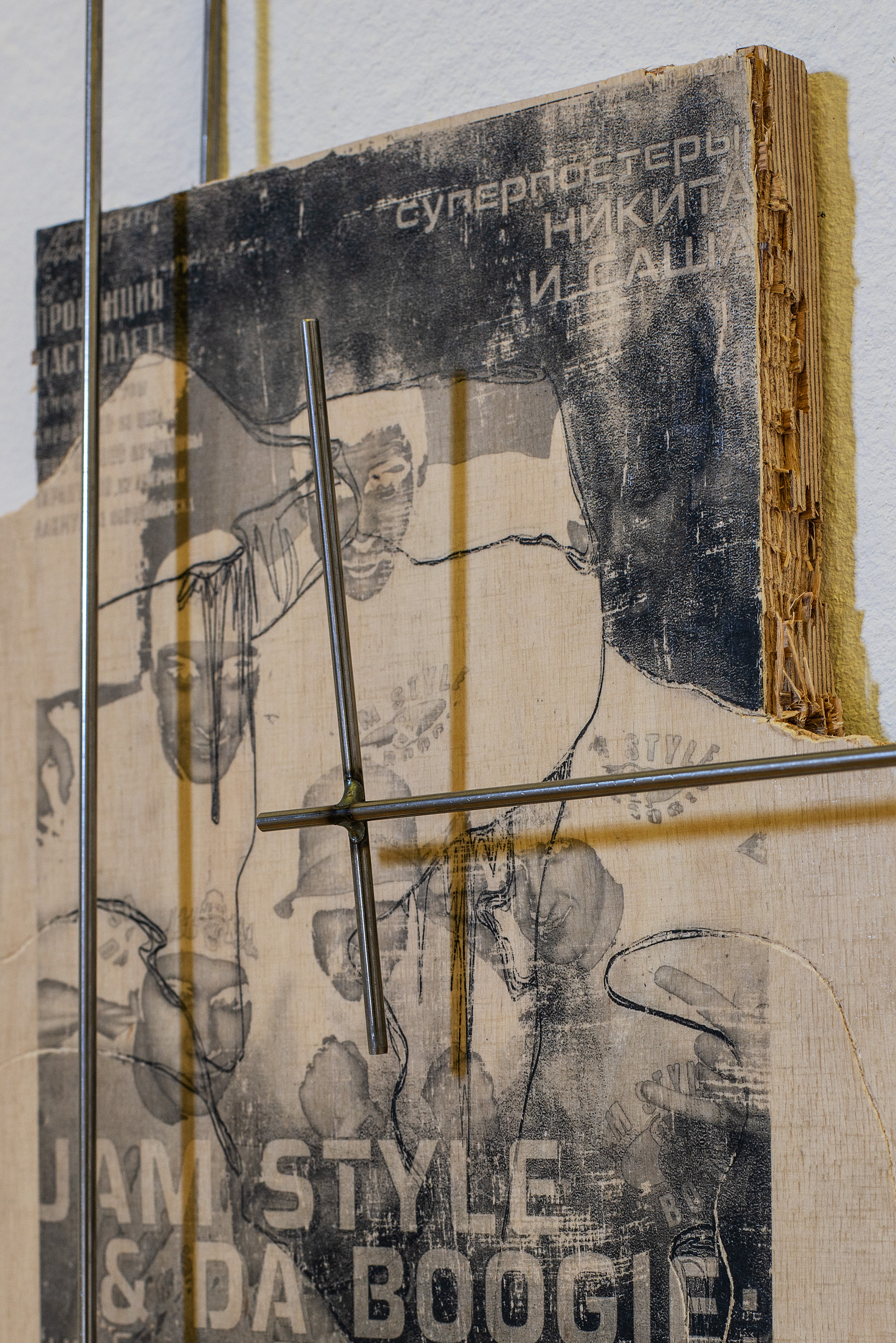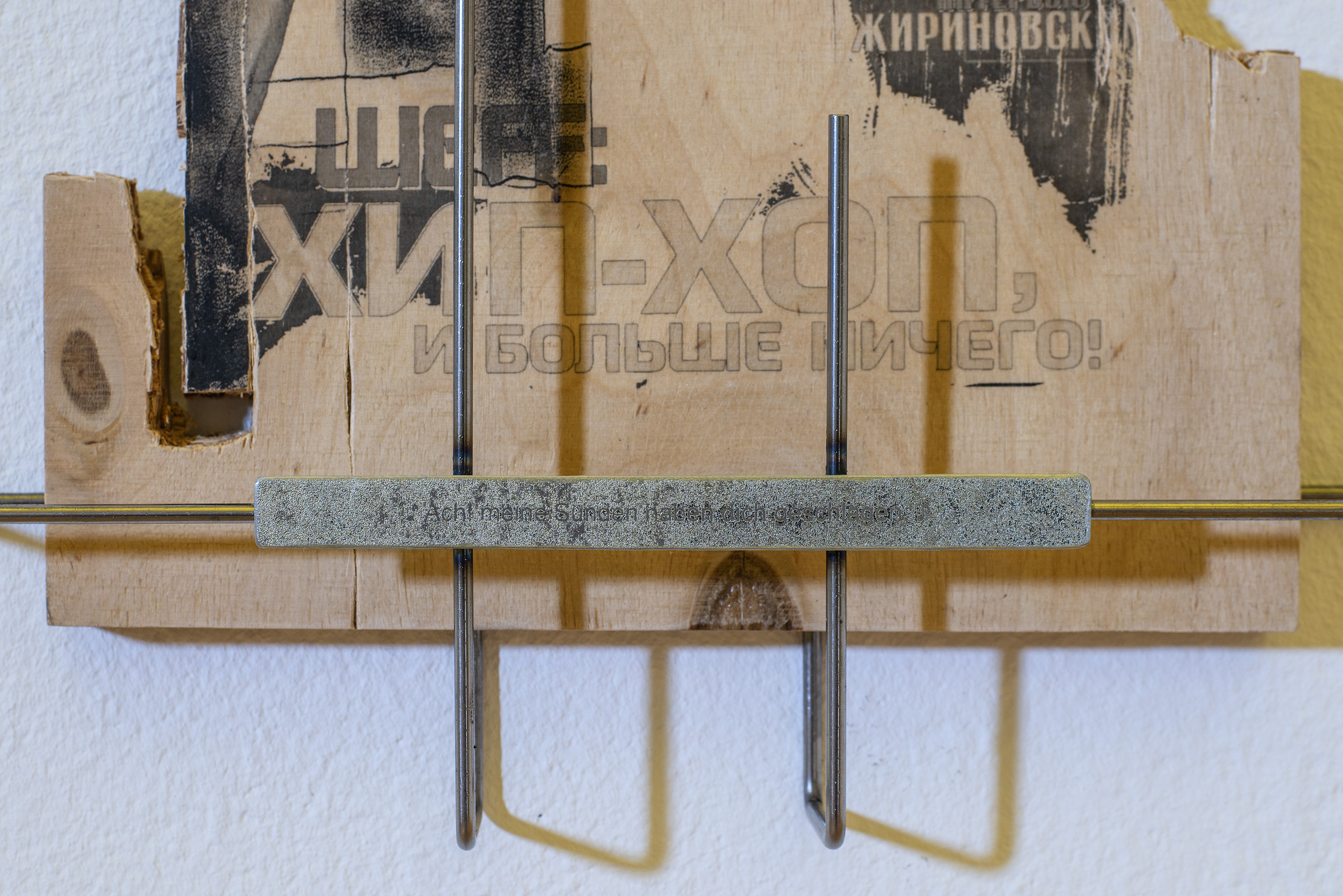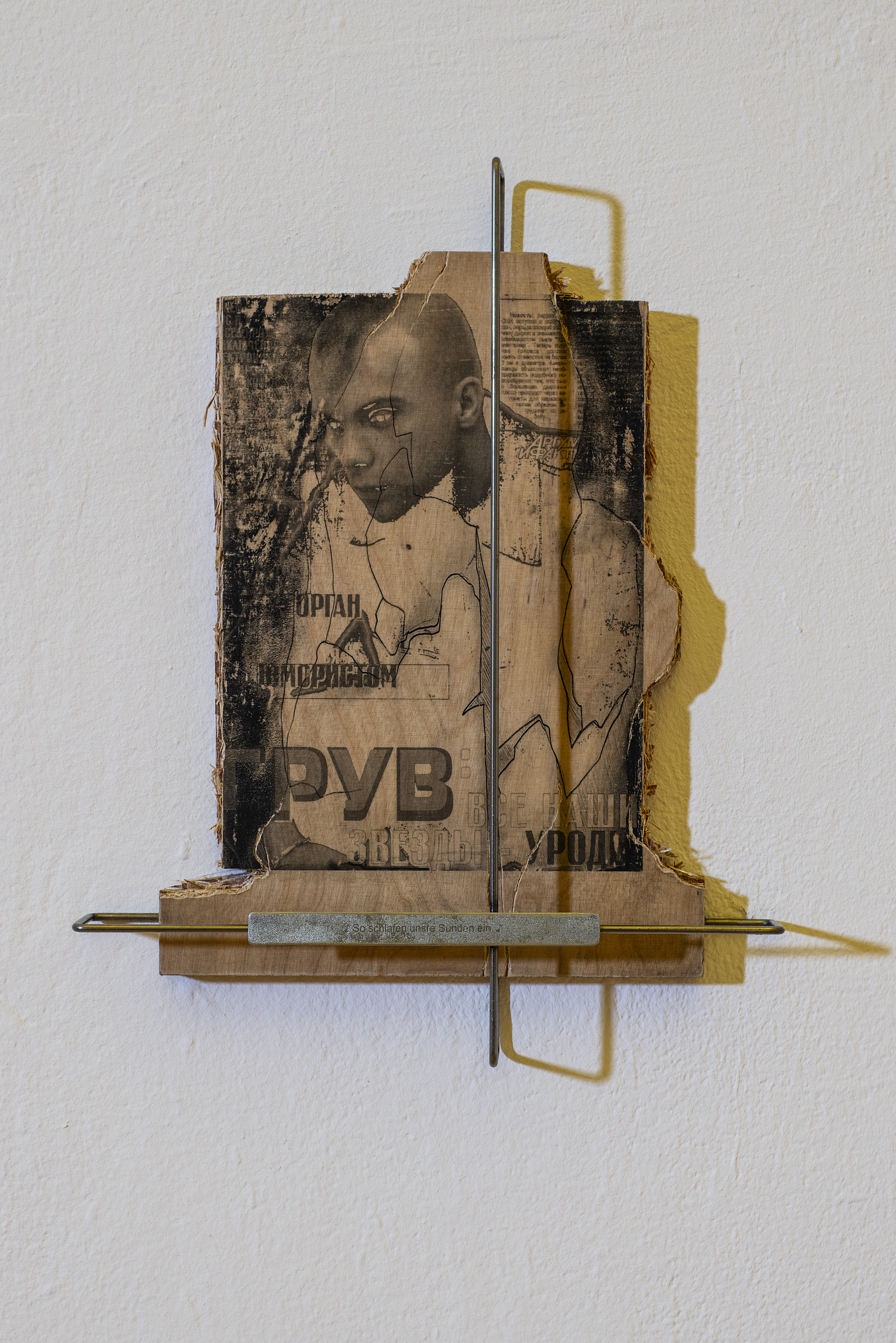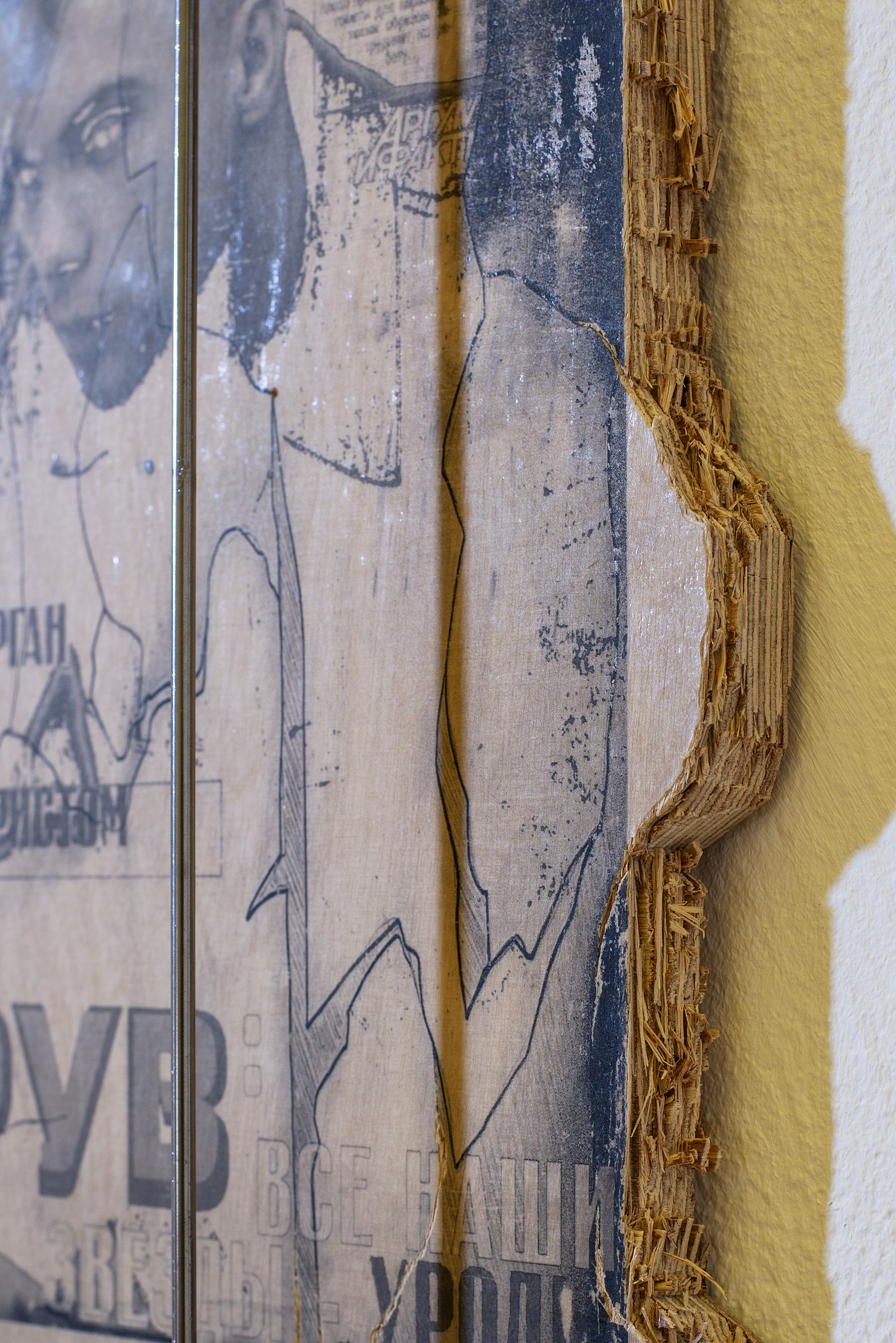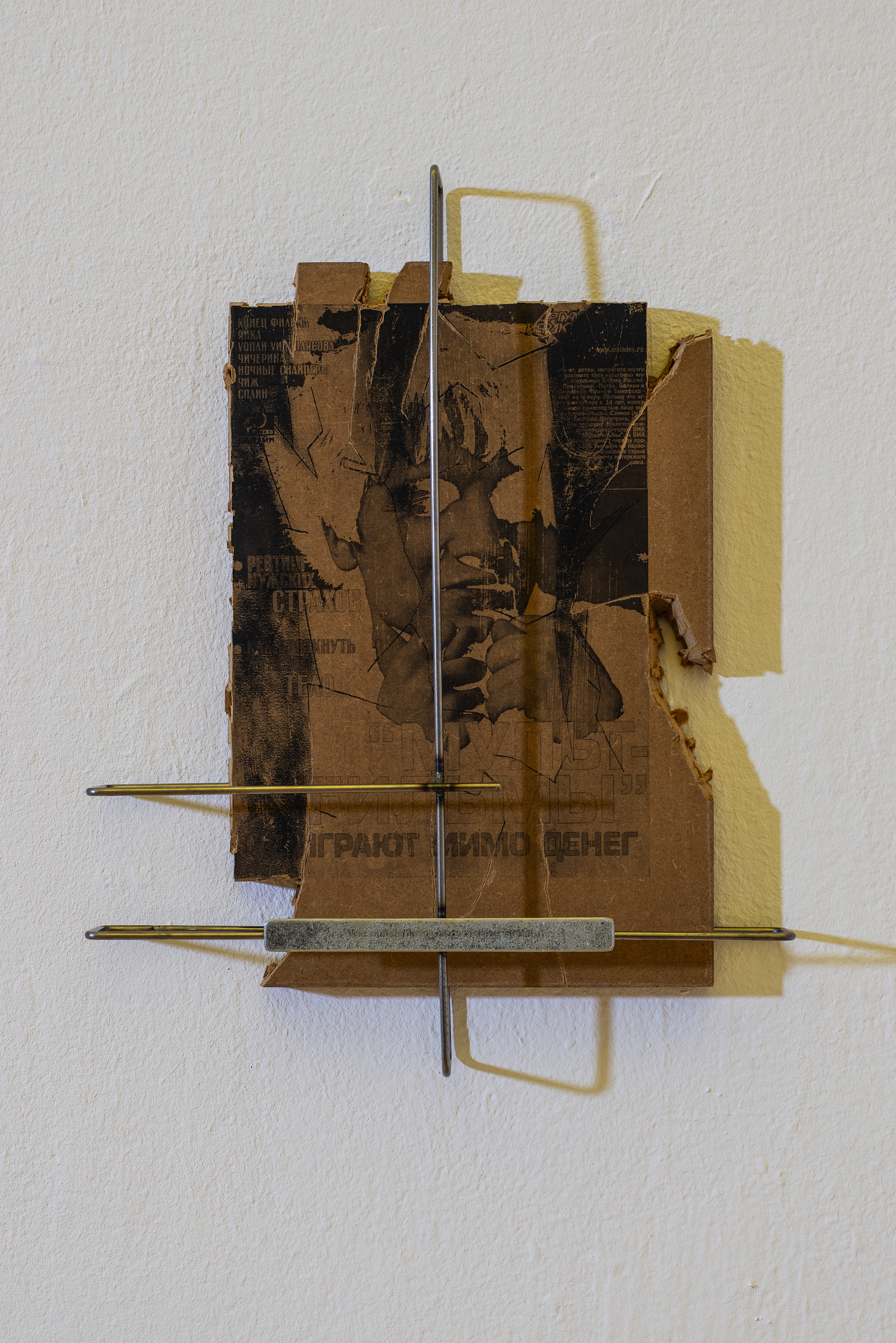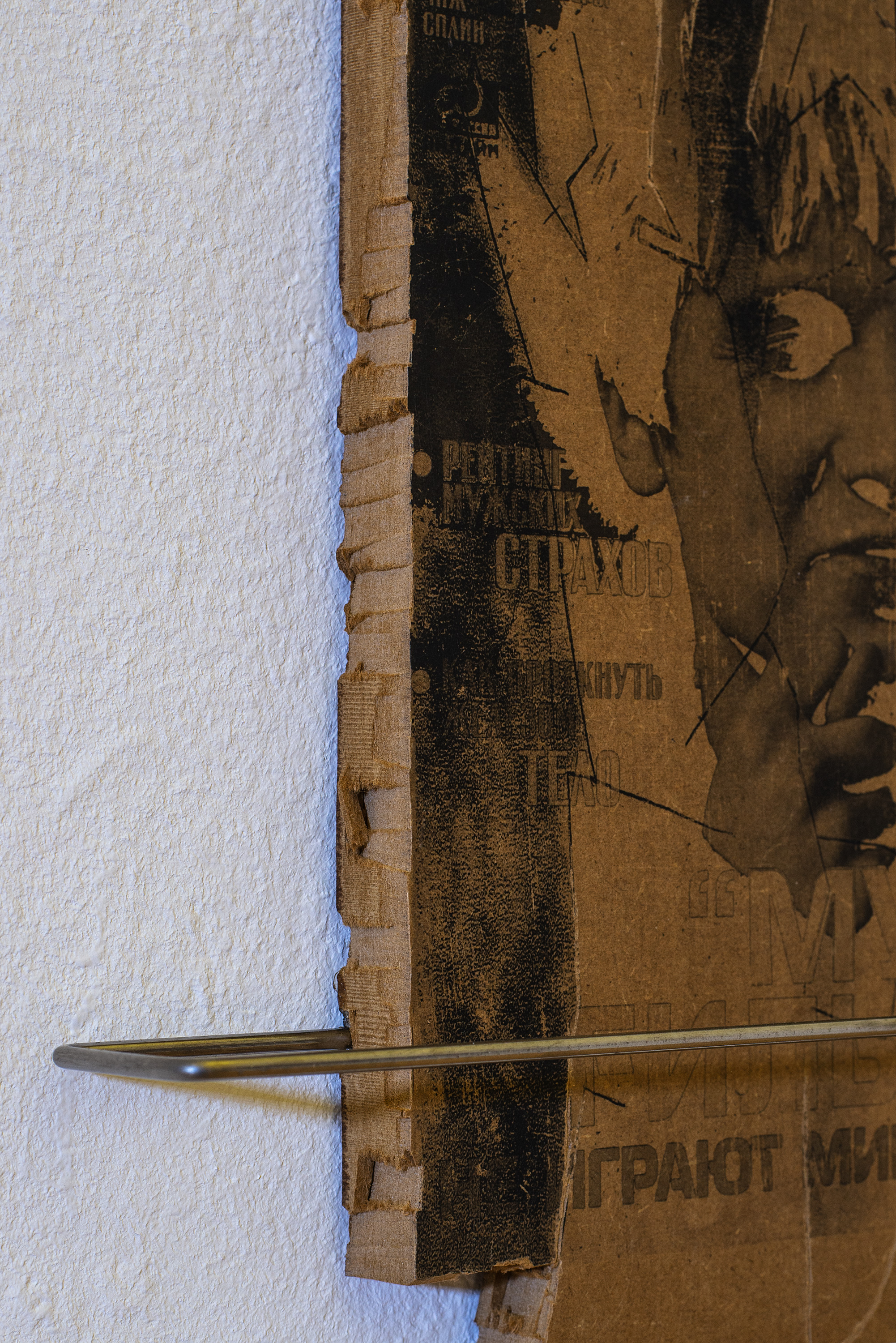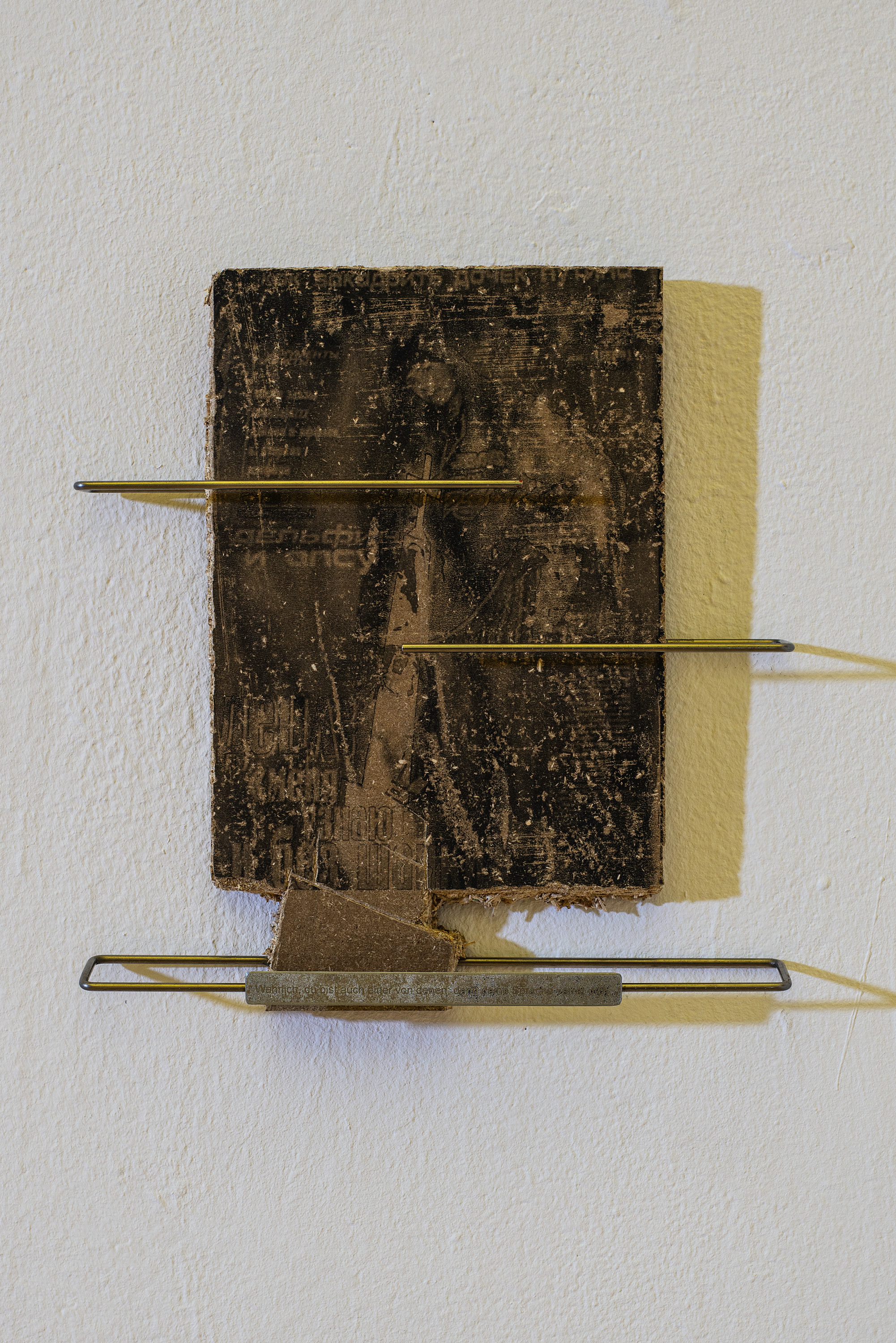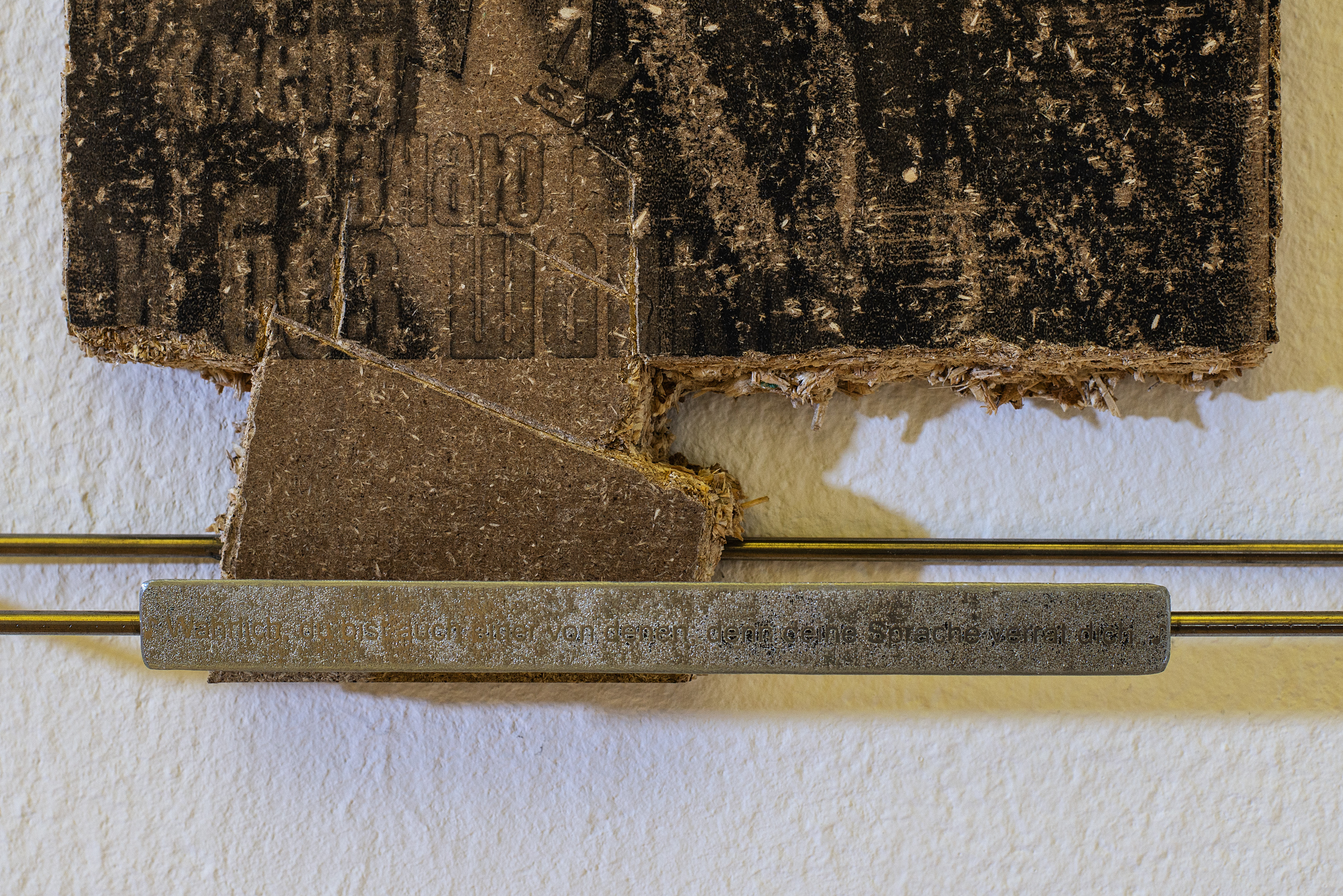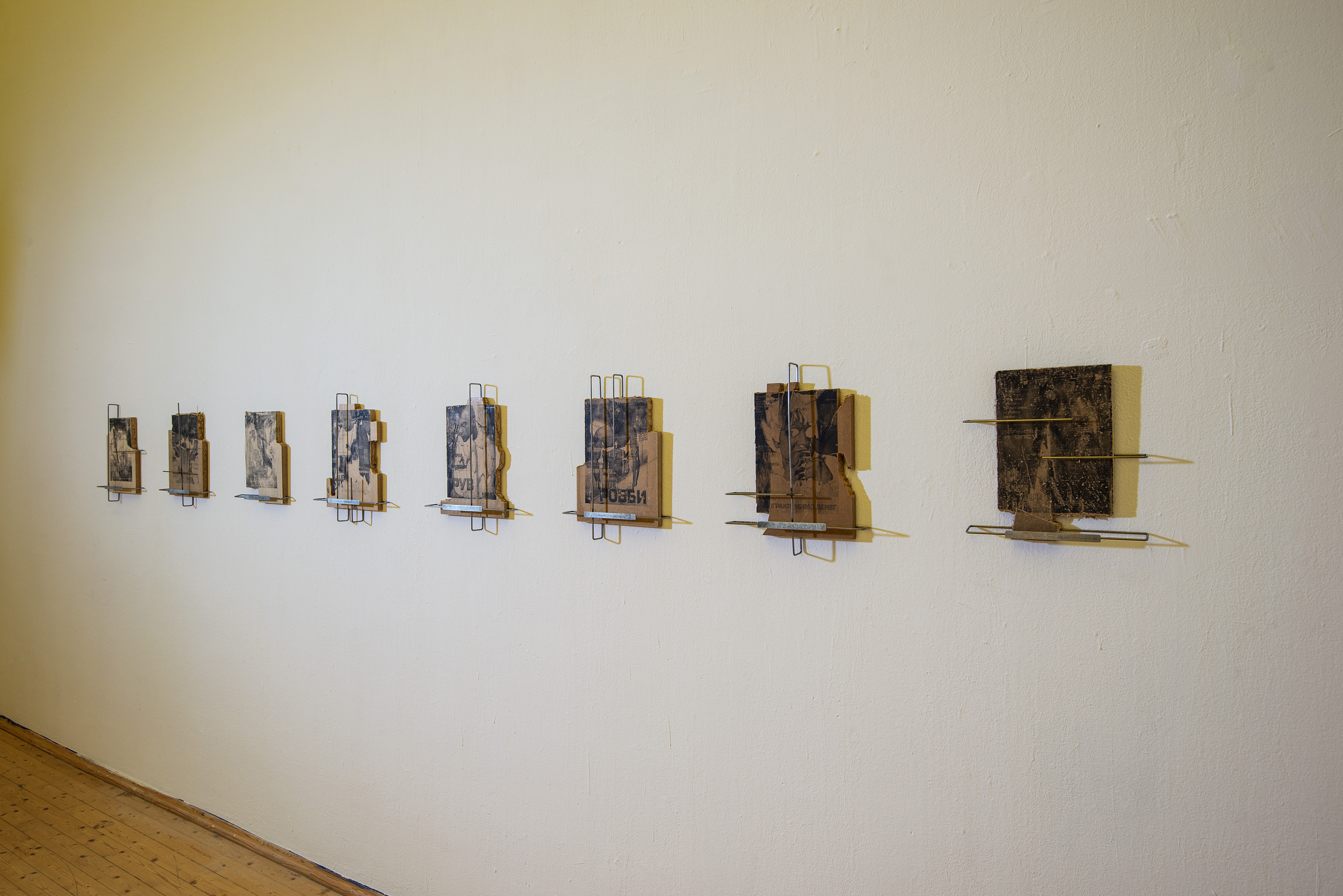UNTITLED (NULL)
2025
pencil drawing on wall, sizes vary
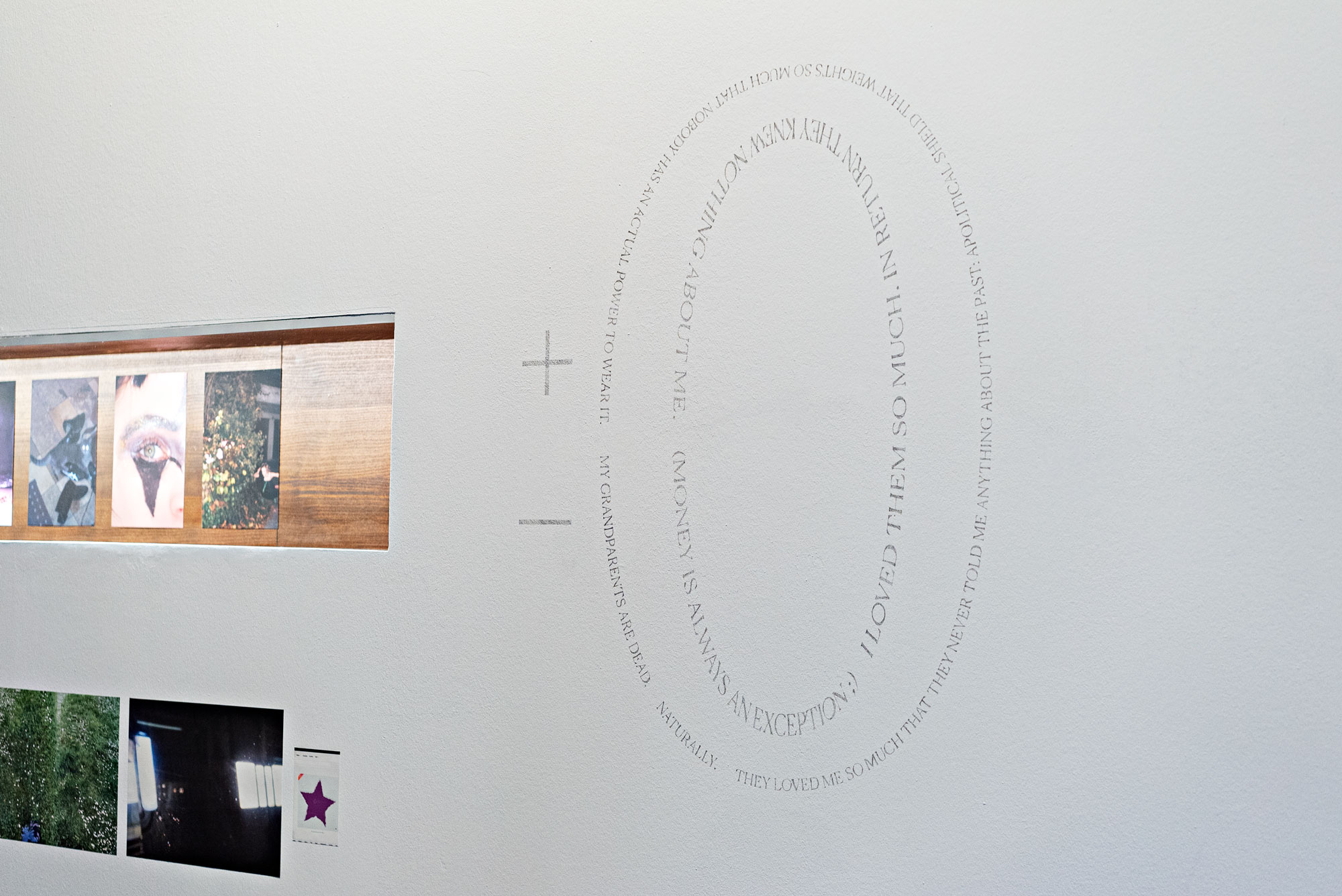
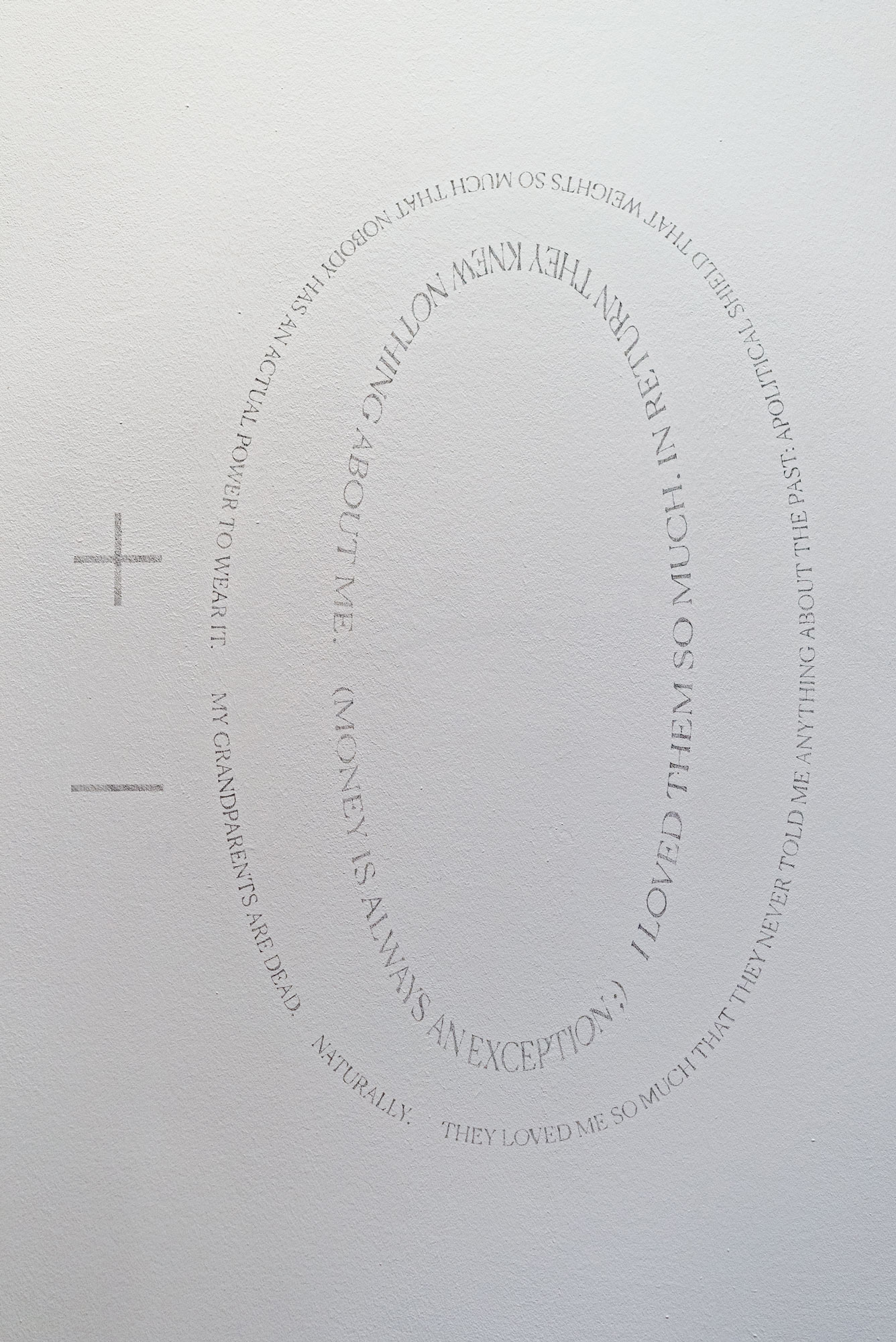
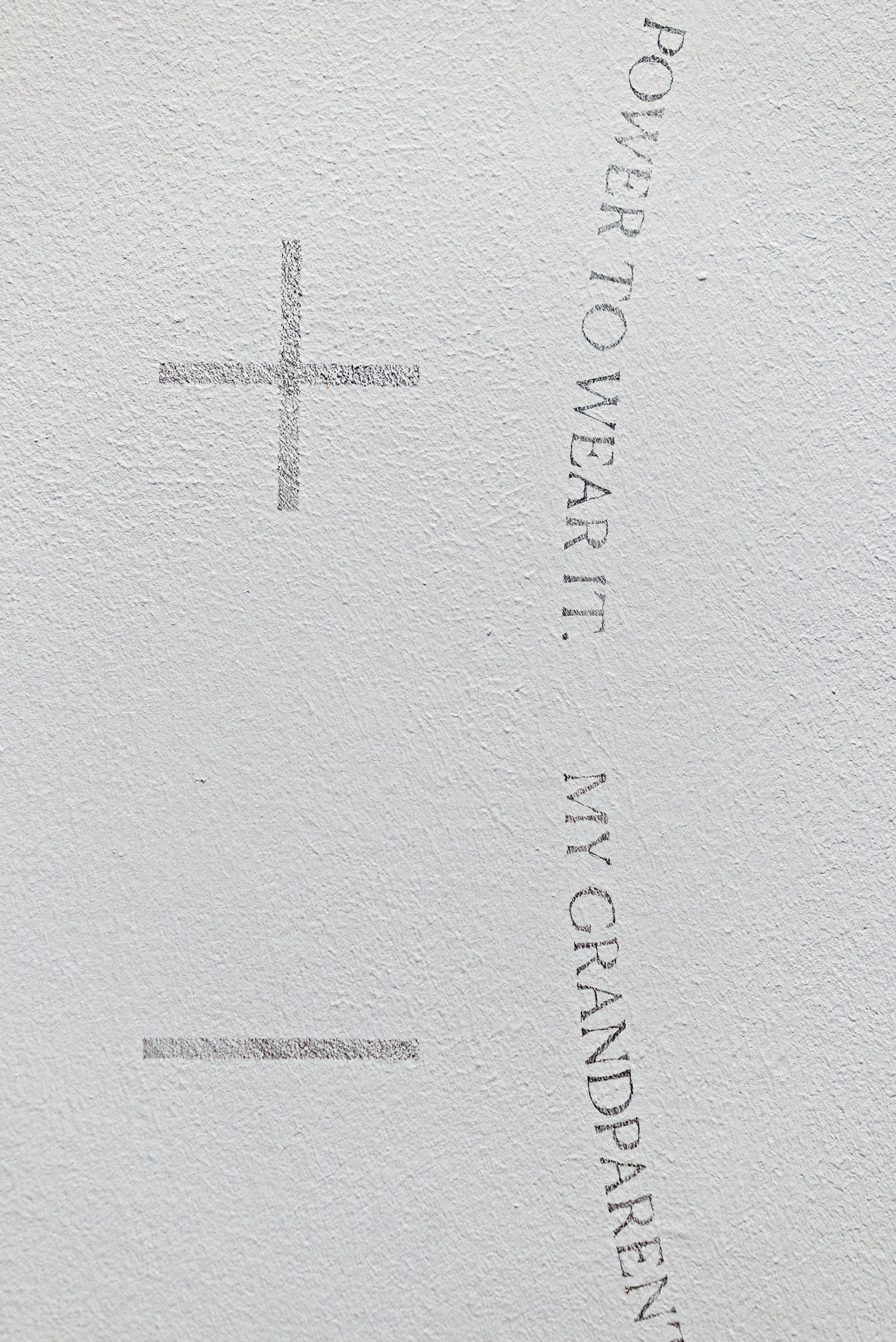

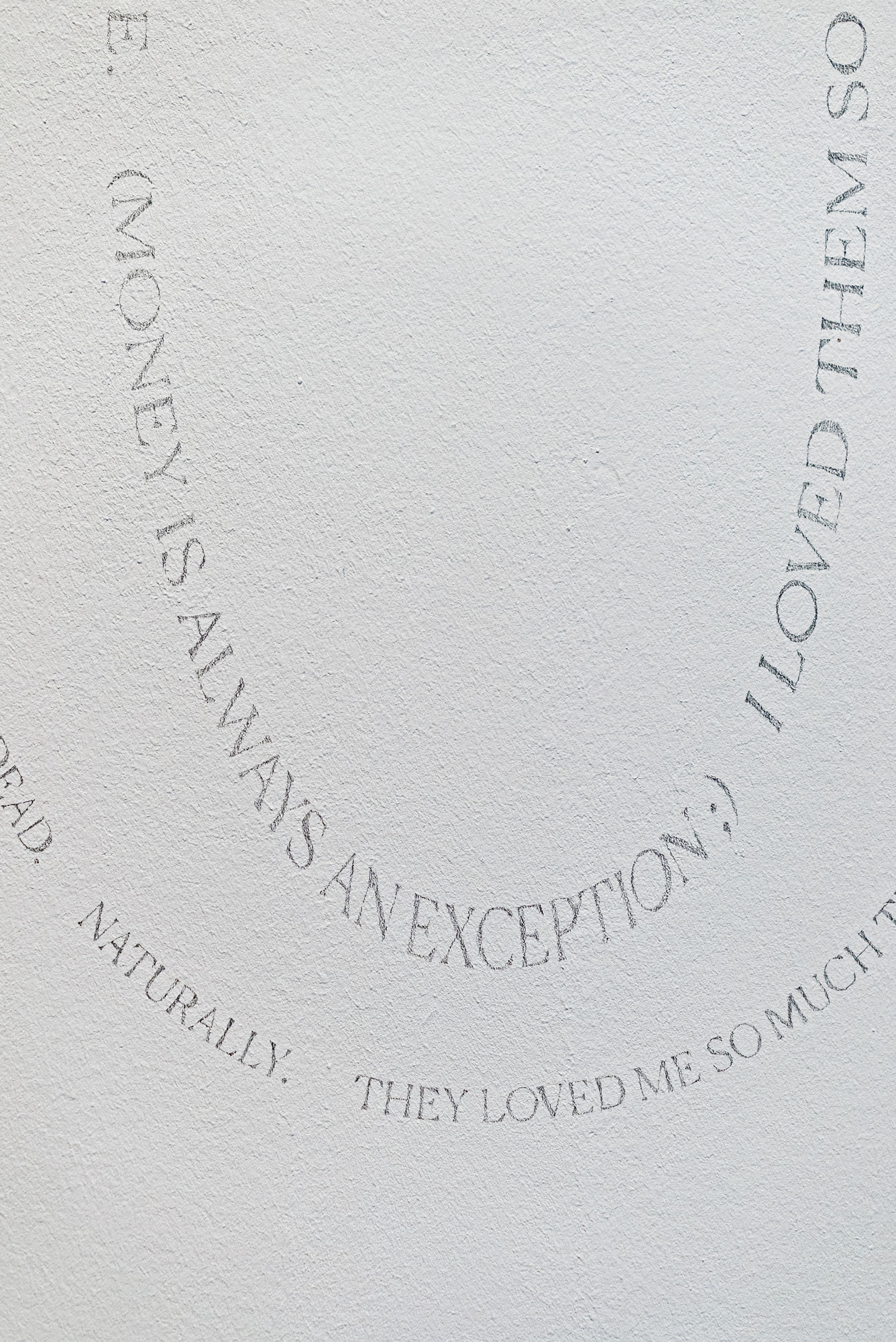
A RED WORD IS A LIE
2024
video installation, red couch, 08'56"

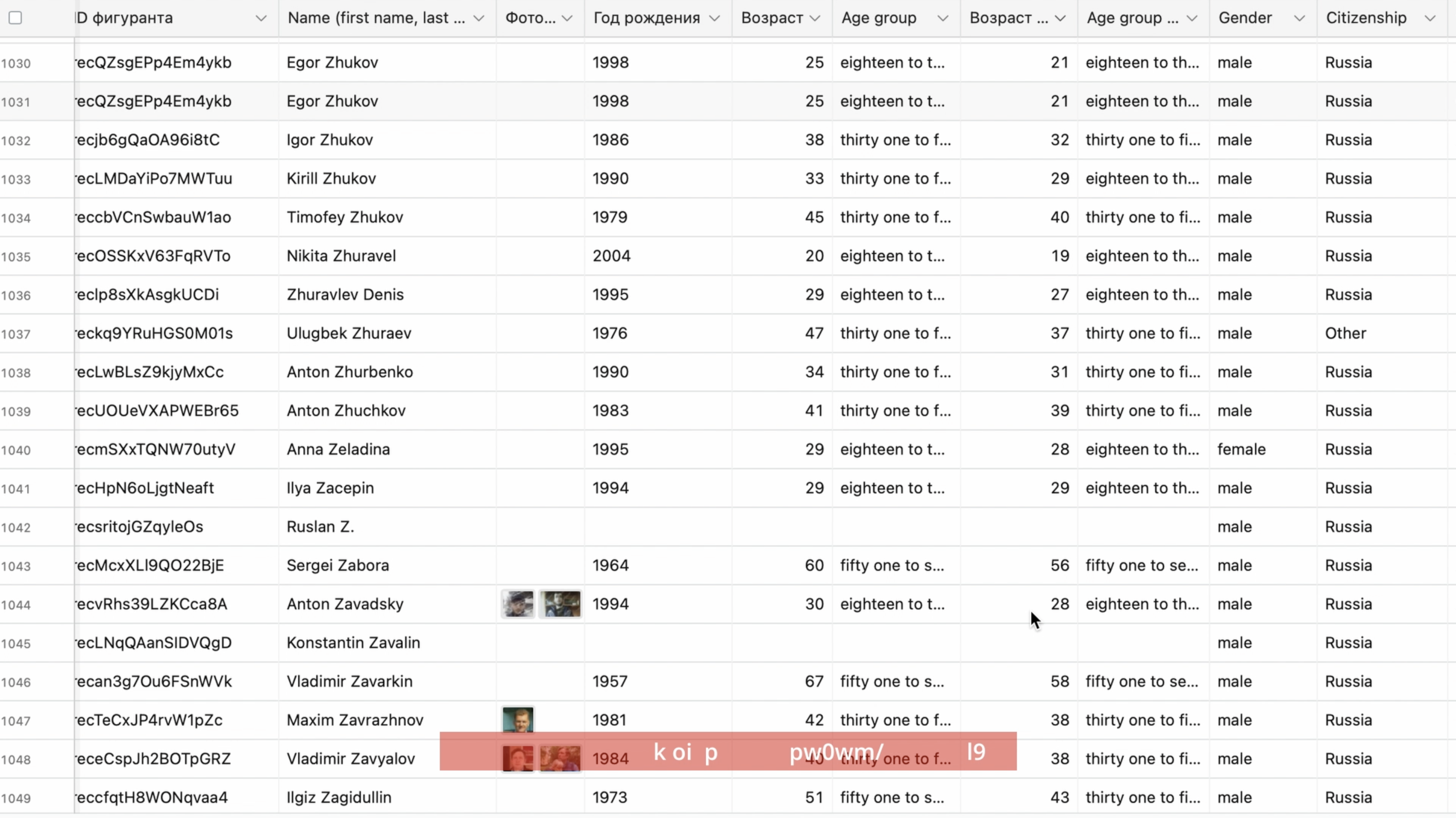
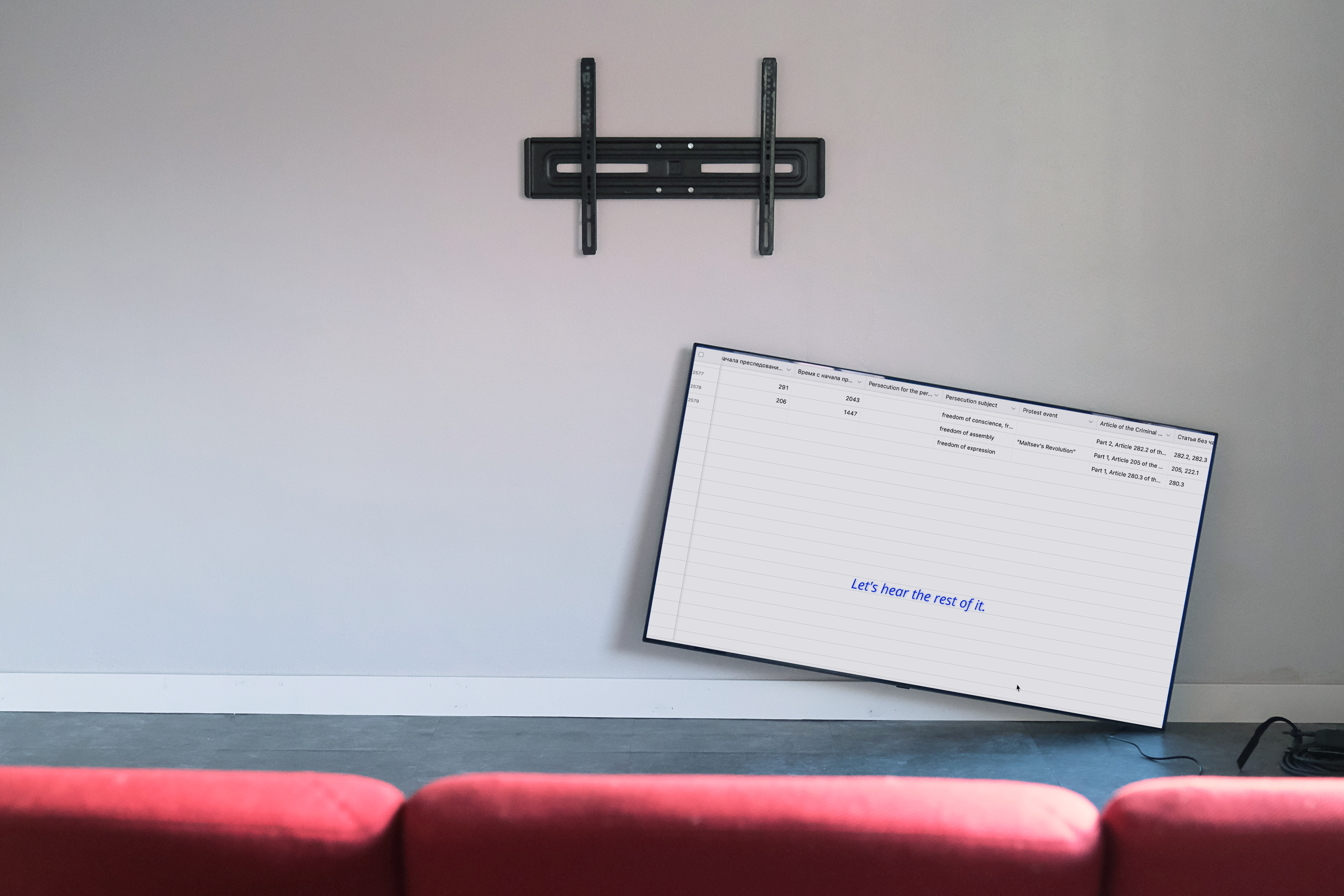


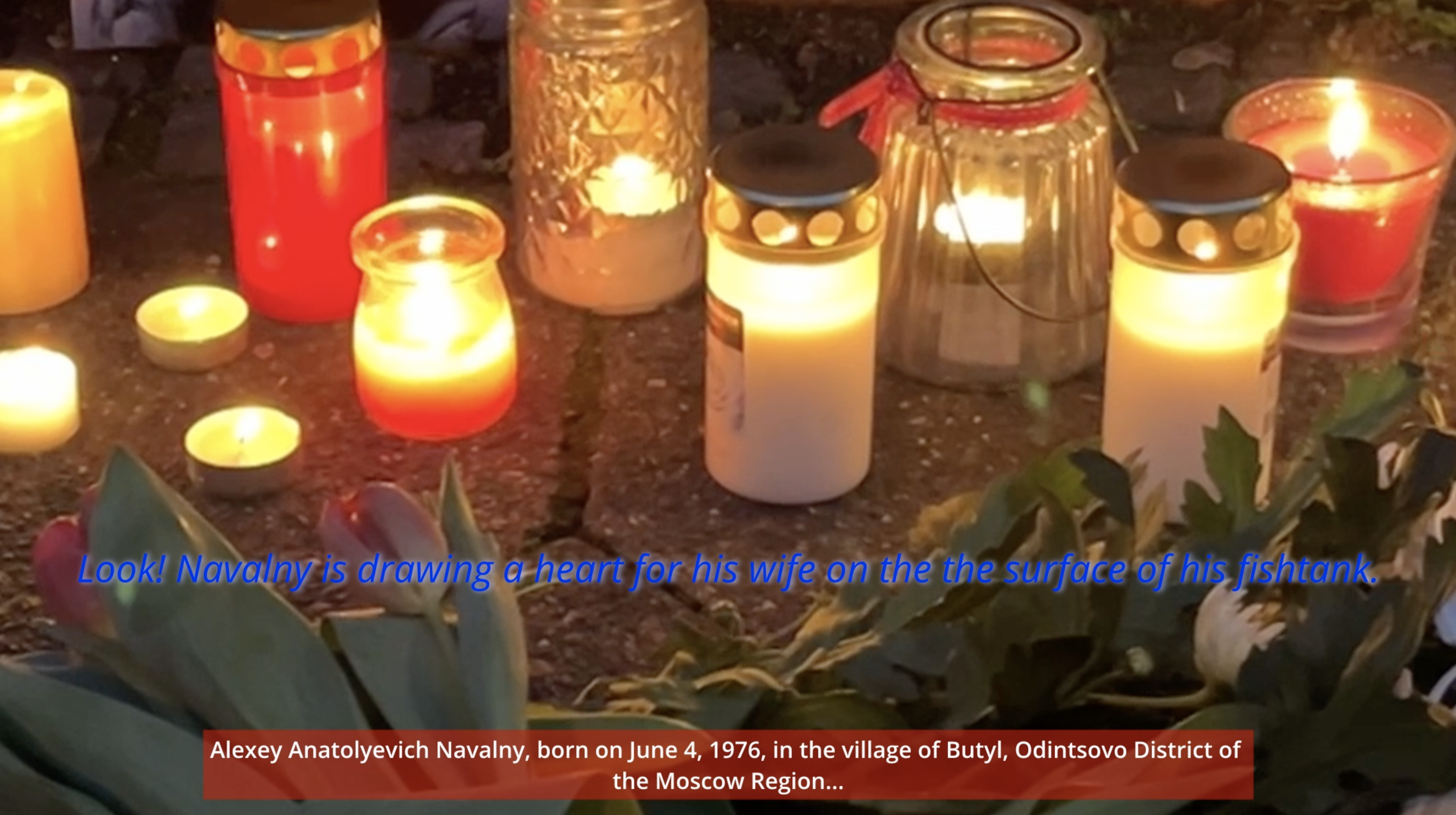


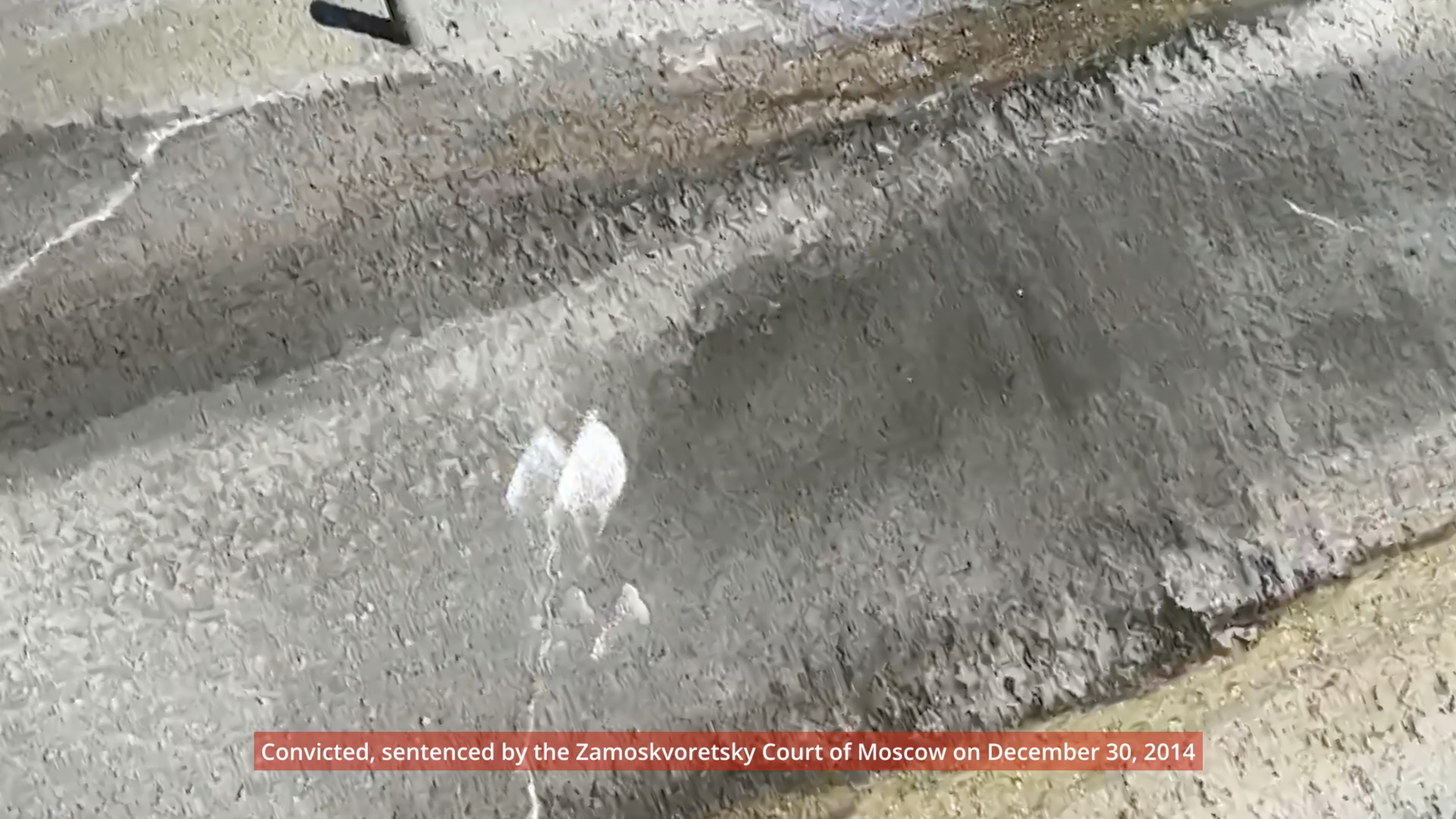
“A red word is a lie” is a poetic visual study of the socio-political landscape in contemporary Russia,
focusing on the court case of A. Navalny and other political prisoners.
The research is primarily based on the open-source database of the human rights organization 'OVD Info'
with additional footage of court proceeding from 2021 made by independent media TV Rain. The video content includes
personal footage taken by the artist in Germany and Turkey after migrating from Russia in 2022.
The core narrative of the video features a dragging landscape that falls into the void of a court announcement
that doesn’t make any sense. The fall has a certain tempo; occasionally pausing but never for long.
The color red plays a pivotal role, referencing the Russian proverb, “A red word is not a lie,” where ‘red’ signifies beauty.
However, “not” is removed from the work’s title. By that, the work strips the prepared speech (for example, a court speech)
of its authority, allowing for a critical dismantling of its intended message.
PASTORAL
2024
site-specific installation, premium permanent glass decorative Oracal, text in English and German,
size may vary
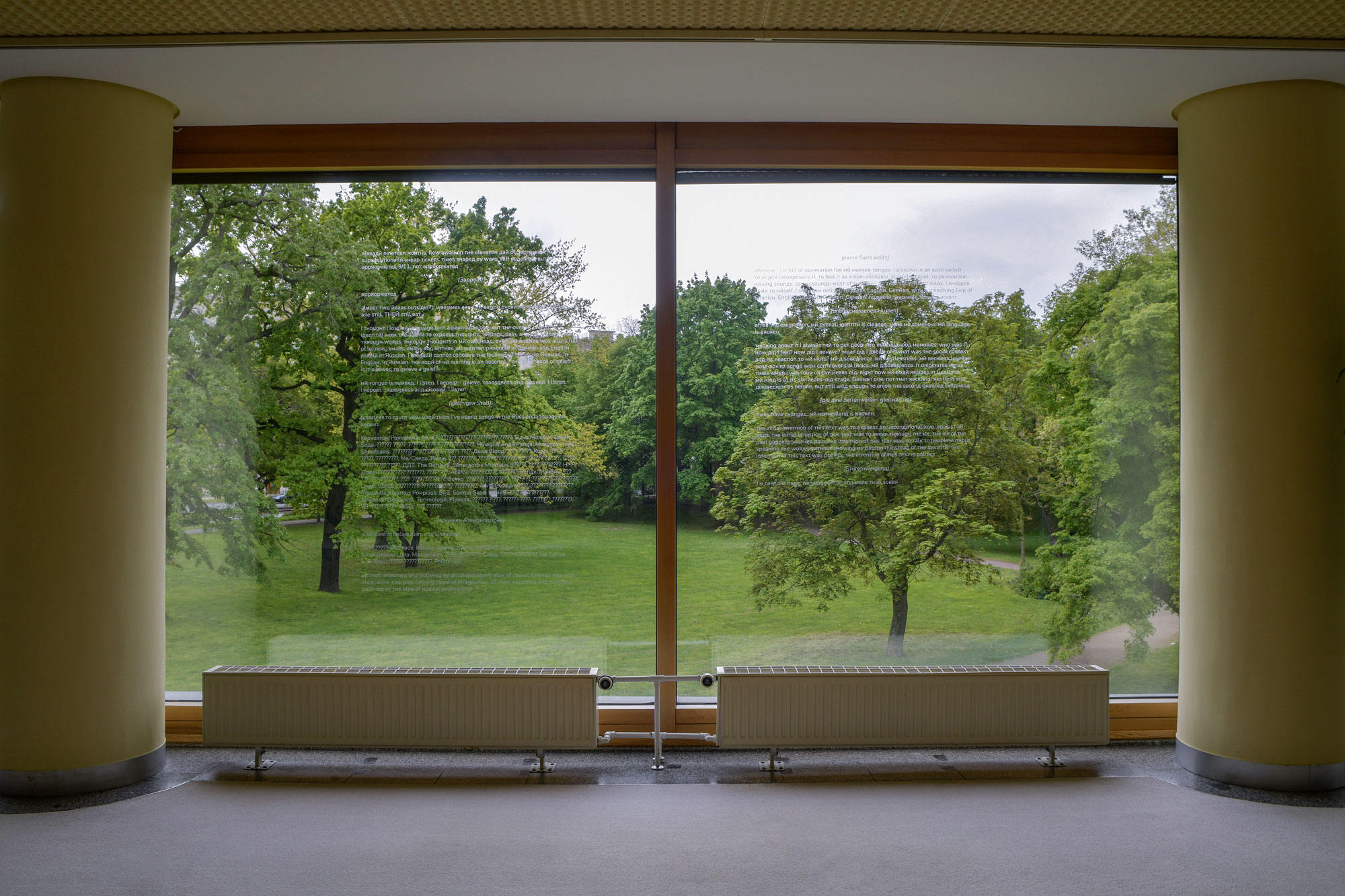

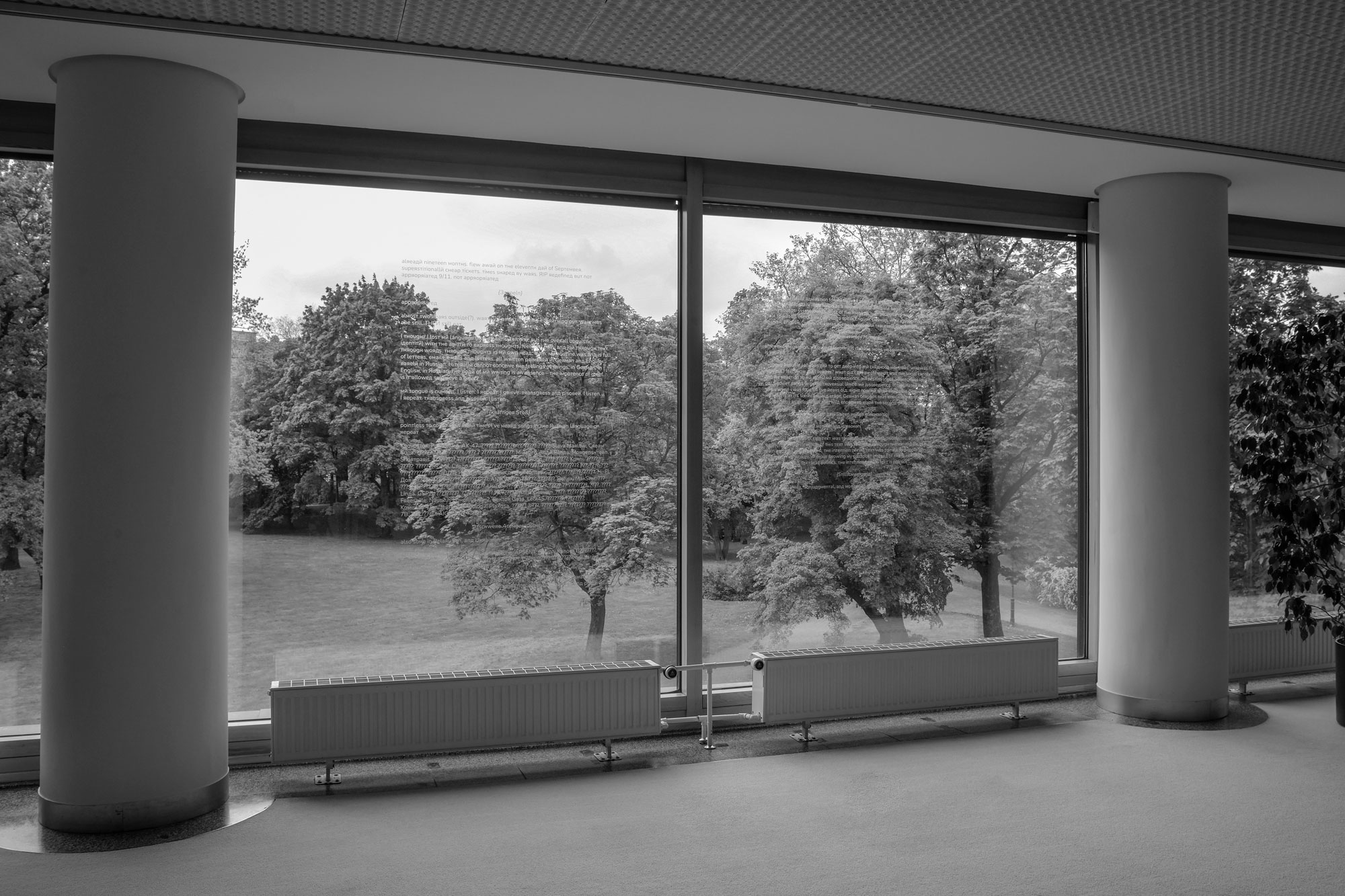



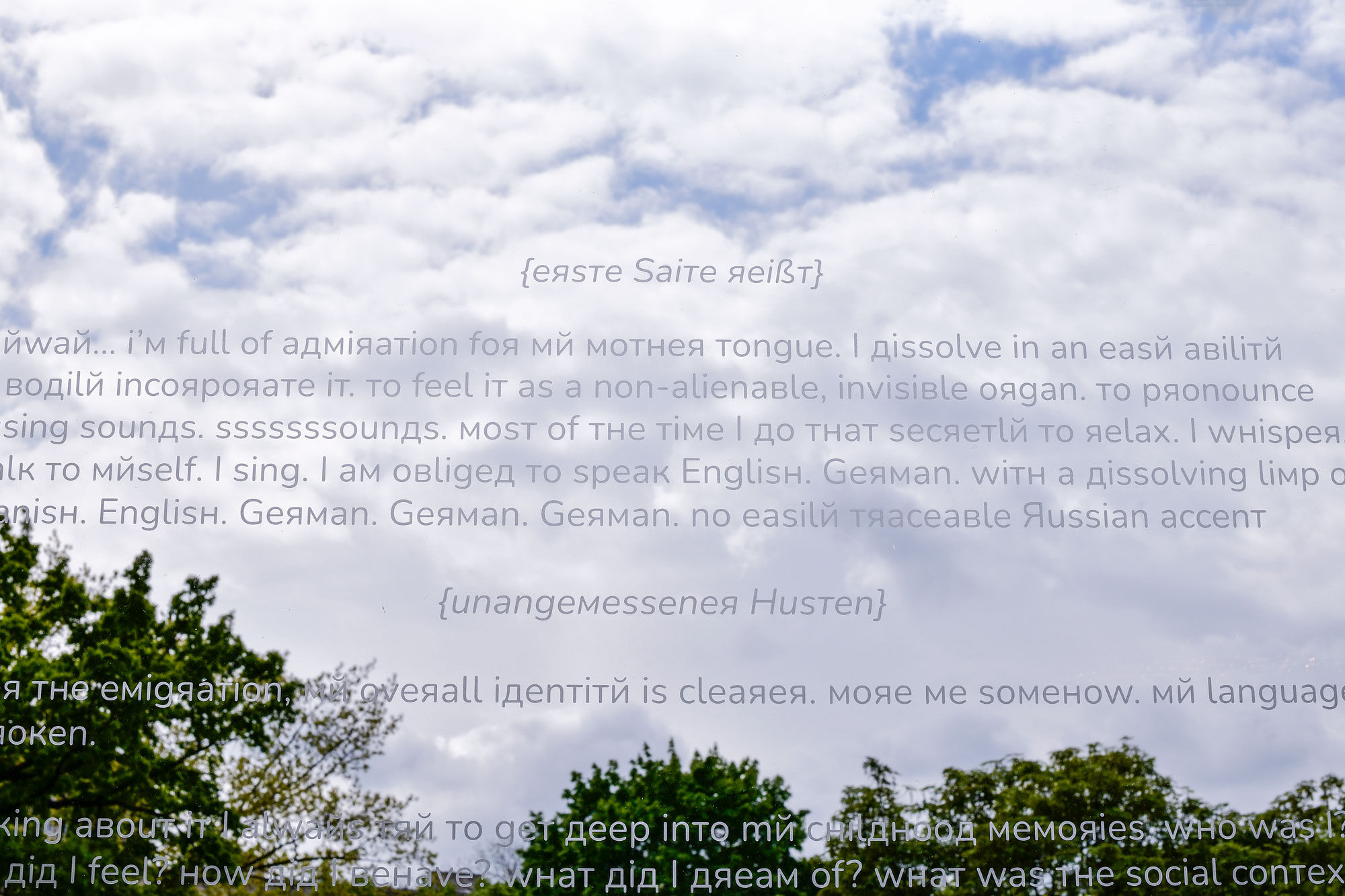

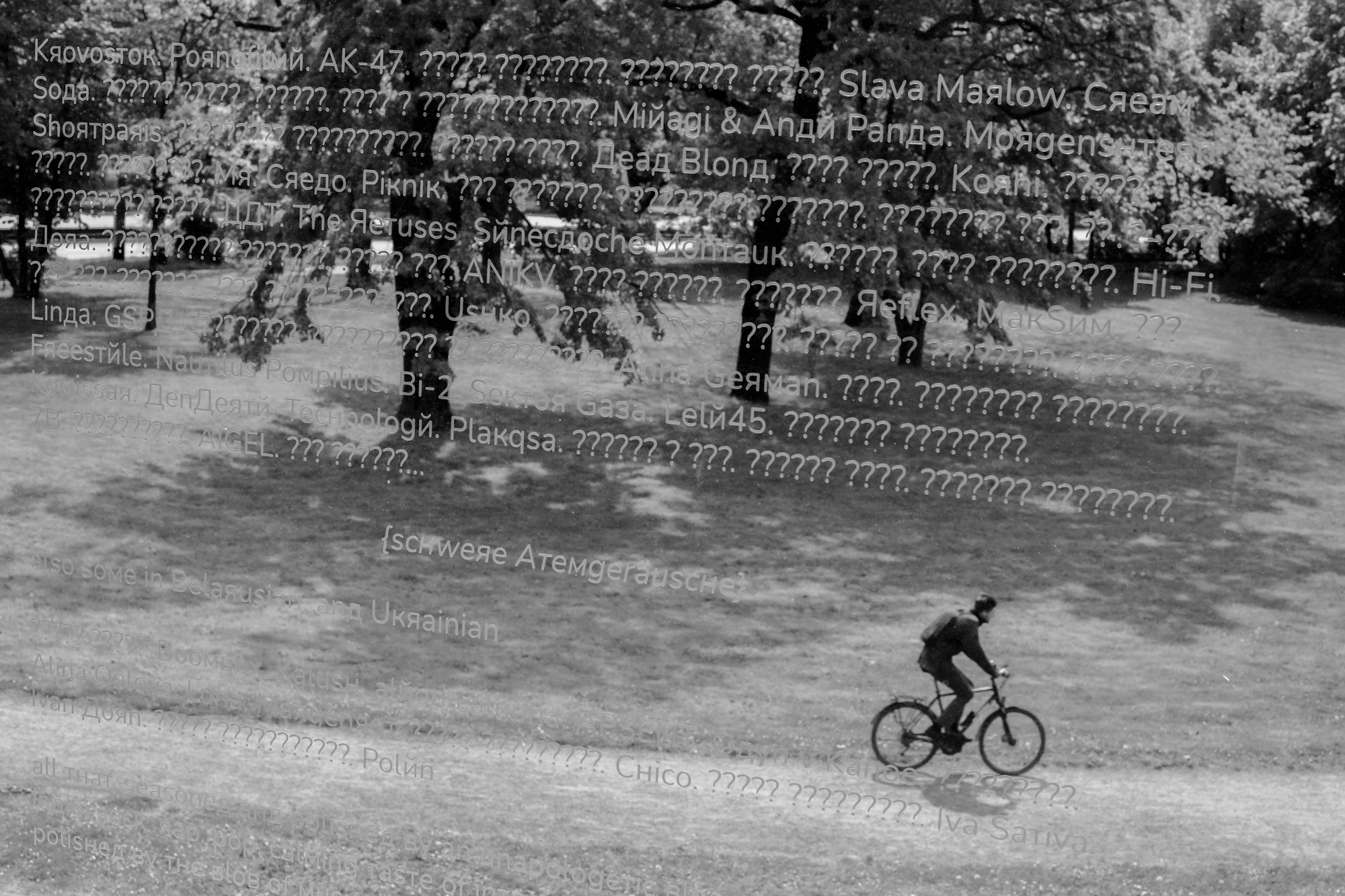

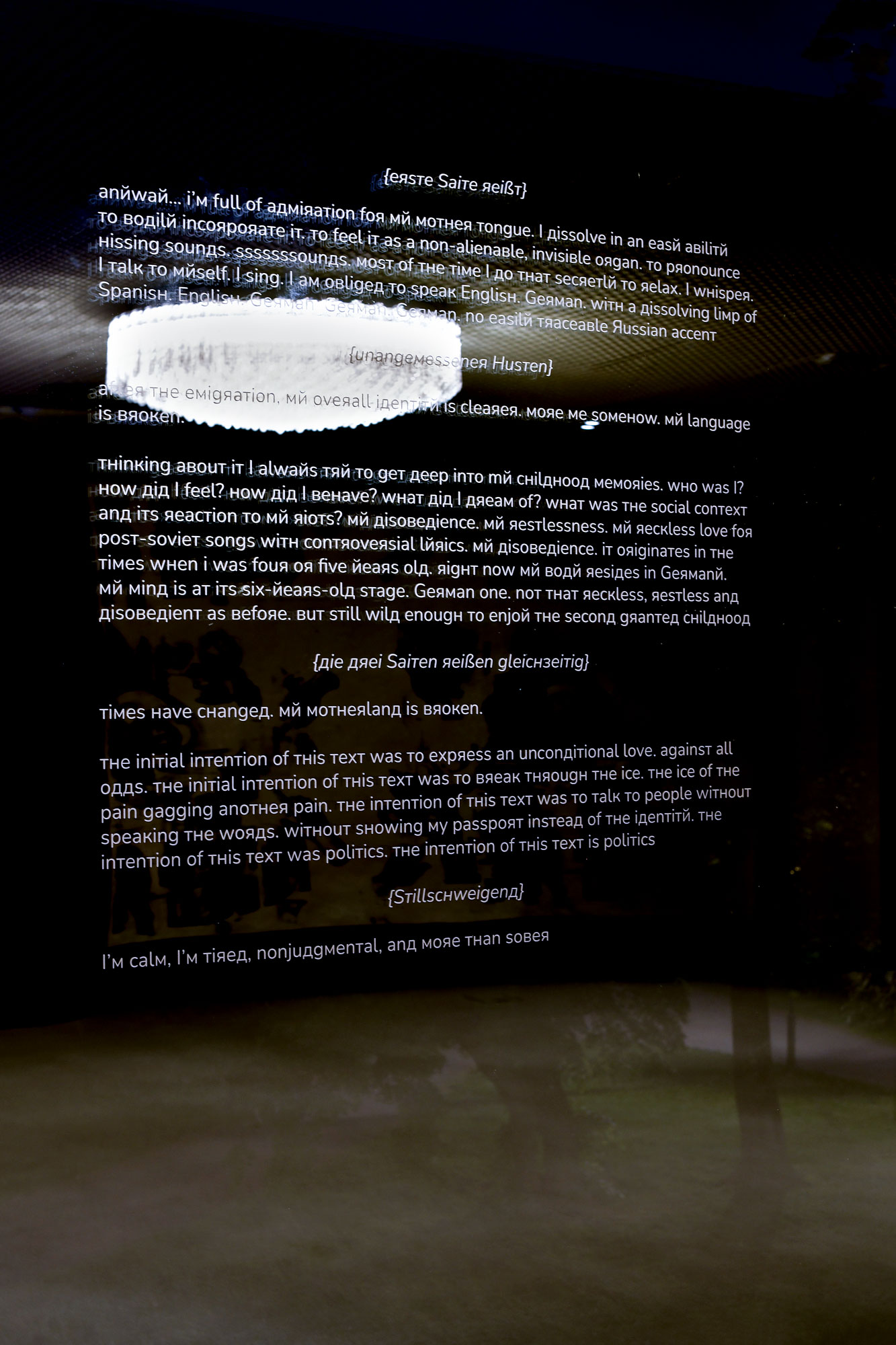

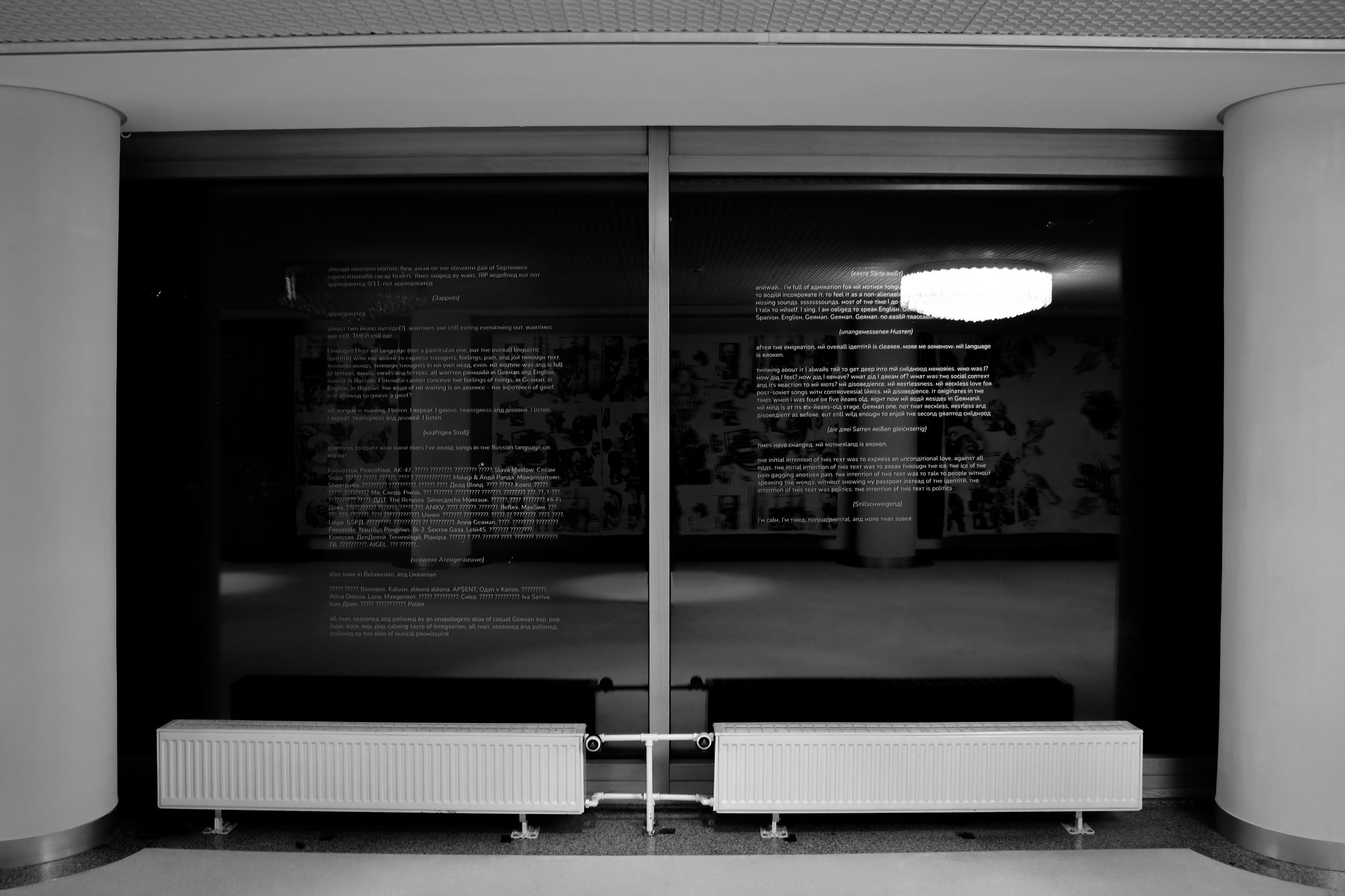
A poetic text, primarily in English, is altered through the mixing of Latin and Cyrillic alphabets.
It’s attached in semi-transparent Oracal-foil to two large windows of the Leo Schwarz Foyer in the Gewandhaus in Leipzig, overlooking the park
and the Stalinist architecture on the Roßplatz. The text is a personal artistic monologue about the mother tongue, music, contemporary politics,
and reinvention of own identity in the midst of the ongoing war that Russia has been waging in Ukraine for many years.
Despite the fact that the artist writes a lot about the Russian language, the language itself is physically absent.
KRASN'EN'KO
(SO EXHAUSTED CAN'T EVEN TALK)
2024
different types of wooden plates for furniture (hanged in the following order: 18-19 '2000, 20-22
'2000, 25-26 '2000, 48-49 '2000, 14-15 '2001, 16-17 '2001, 18-19 '2001, '?), steel, acidized zinc,
print on wood, varnish, construction adhesive
